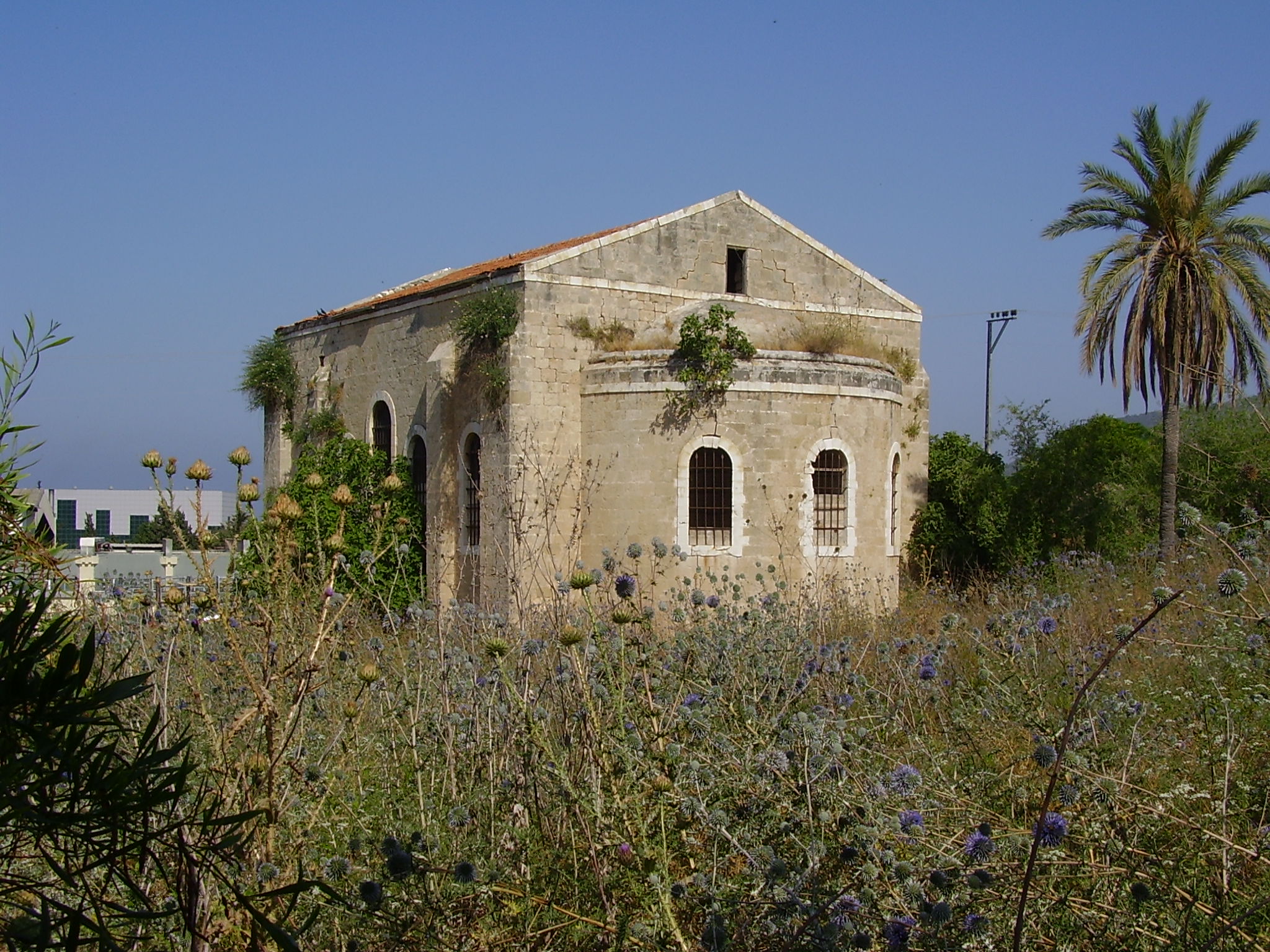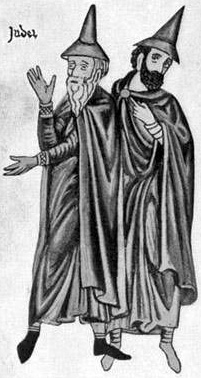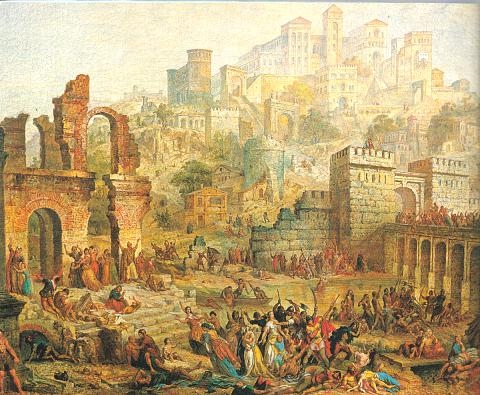|
Matzuva
Matzuva (), also known as Metzuba, is a kibbutz in the Western Galilee in northern Israel. Located to the south of the development town of Shlomi, it falls under the jurisdiction of Mateh Asher Regional Council. In it had a population of . Etymology The settlement was named after the nearby Byzantine-period town of ''Pi-ha-Masuba'', a place mentioned in the Tosefta (''Shevi'it'' 4:8-ff.) and in the 3rd-century Mosaic of Rehob.. The ancient Christian town was thoroughly destroyed in 613 or 614, never to regain its former size and wealth, but the name survived throughout the Early Muslim, Crusader, and into the Mamluk period. The remains of Byzantine-era Pi Metzuba, whose location was known from previous surveys, were actually discovered in 2020 along the road connecting Shlomi and Hanita, [...More Info...] [...Related Items...] OR: [Wikipedia] [Google] [Baidu] |
Matzuva Attack
The Matzuva attack was an attack on March 12, 2002, in which two Islamic Jihad militants who infiltrated Israel from Lebanon opened fire on civilian vehicles traveling on the Shlomi- Matzuva road. After killing a shepherd who was out with his flock, the militants, who were dressed in Israeli military uniforms and hid in underbrush, ambushed cars on the road, killing four motorists. The victims included a woman her teenage daughter from Kibbutz Hanita. The militants were killed in a gunbattle with responding Israeli troops in which an Israeli officer was also killed. Afterwards scans of the area were carried out to ensure no more militants had infiltrated.Fatal Attack Shatters Israeli Border Town's Calm ''New York Times'', ... [...More Info...] [...Related Items...] OR: [Wikipedia] [Google] [Baidu] |
Mosaic Of Rehob
The Mosaic of Reḥob (, also known as the Tel Rehov inscription and the Baraita of the Boundaries), is a late 3rd–6th century Common Era, CE mosaic discovered in 1973. The mosaic, written in late Mishnaic Hebrew, describes the geography and agricultural rules of the local History of the Jews in the Byzantine Empire, Jews of the era. It was inlaid in the floor of the foyer or narthex of an ancient synagogue near Tel Rehov, south of Beit She'an and about west of the Jordan River. The mosaic contains the longest written text yet discovered in any Hebrew mosaic in Israel, and also the oldest known Talmudic text. Unlike other mosaics found in the region, the Reḥob mosaic is unique not for its artistry and ornate patterns but for the text incorporated in it. Scholars say it is one of the most important epigraphical findings in the Holy Land in the last century, and sheds invaluable light on the historical geography of Palestine (region), Palestine during the Roman Empire, Lat ... [...More Info...] [...Related Items...] OR: [Wikipedia] [Google] [Baidu] |
Al-Bassa
al-Bassa () was a Palestinians, Palestinian Arab village in the Mandatory Palestine's Acre Subdistrict, Mandatory Palestine, Acre Subdistrict. It was situated close to the Blue Line (Lebanon), Lebanese border, north of the district capital, Acre (city), Acre, and above sea level. During the 1948 Palestine War the village was stormed by Haganah troops in May 1948 and almost completely razed. Its residents were either internally displaced Palestinians, internally displaced or expelled to neighboring countries as part of the 1948 Palestinian expulsion. Today, the ruins of the village are in the northern quarters of the moshav of Shlomi, Israel, Shlomi. Etymology Adolf Neubauer "proposed to identify this place with the Bezet, Batzet of the Talmud". It was called ''Bezeth'' during the Roman Empire, Roman period, and its Arabic name is ''al-Basah''.Michael Avi-Yonah, Avi Yonah, 1976, p. 42. Cited in Khalidi, 1992, p. 6 In the period of Crusades, Crusader rule in Palestine, it was kn ... [...More Info...] [...Related Items...] OR: [Wikipedia] [Google] [Baidu] |
German Jews
The history of the Jews in Germany goes back at least to the year 321 CE, and continued through the Early Middle Ages (5th to 10th centuries CE) and High Middle Ages (c. 1000–1299 CE) when Jewish immigrants founded the Ashkenazi Jewish community. The community survived under Charlemagne, but suffered during the Crusades. Accusations of well poisoning during the Black Death (1346–1353) led to mass slaughter of German Jews, while others fled in large numbers to Poland. The Jewish communities of the cities of Mainz, Speyer and Worms became the center of Jewish life during medieval times. "This was a golden age as area bishops protected the Jews, resulting in increased trade and prosperity." The First Crusade began an era of persecution of Jews in Germany. Entire communities, like those of Trier, Worms, Mainz and Cologne, were slaughtered. The Hussite Wars became the signal for renewed persecution of Jews. The end of the 15th century was a period of religious hatred that ascri ... [...More Info...] [...Related Items...] OR: [Wikipedia] [Google] [Baidu] |
Aliyah
''Aliyah'' (, ; ''ʿălīyyā'', ) is the immigration of Jews from Jewish diaspora, the diaspora to, historically, the geographical Land of Israel or the Palestine (region), Palestine region, which is today chiefly represented by the Israel, State of Israel. Traditionally described as "the act of going up" (towards the Jerusalem in Judaism, Jewish holy city of Jerusalem), moving to the Land of Israel or "making aliyah" is one of the most basic tenets of Zionism. The opposite action – emigration by Jews from the Land of Israel – is referred to in the Hebrew language as ''yerida'' (). The Law of Return that was passed by the Knesset, Israeli parliament in 1950 gives all diaspora Jews, as well as their children and grandchildren, the right to relocate to Israel and acquire Israeli citizenship on the basis of connecting to their Jewish identity. For much of Jewish history, their history, most Jews have lived in the diaspora outside of the Land of Israel due to Jewish militar ... [...More Info...] [...Related Items...] OR: [Wikipedia] [Google] [Baidu] |
Populated Places Established In 1940
Population is a set of humans or other organisms in a given region or area. Governments conduct a census to quantify the resident population size within a given jurisdiction. The term is also applied to non-human animals, microorganisms, and plants, and has specific uses within such fields as ecology and genetics. Etymology The word ''population'' is derived from the Late Latin ''populatio'' (a people, a multitude), which itself is derived from the Latin word ''populus'' (a people). Use of the term Social sciences In sociology and population geography, population refers to a group of human beings with some predefined feature in common, such as location, race, ethnicity, nationality, or religion. Ecology In ecology, a population is a group of organisms of the same species which inhabit the same geographical area and are capable of interbreeding. The area of a sexual population is the area where interbreeding is possible between any opposite-sex pair within the area ... [...More Info...] [...Related Items...] OR: [Wikipedia] [Google] [Baidu] |
Kibbutzim
A kibbutz ( / , ; : kibbutzim / ) is an intentional community in Israel that was traditionally based on agriculture. The first kibbutz, established in 1910, was Degania. Today, farming has been partly supplanted by other economic branches, including industrial plants and high-tech enterprises. Kibbutzim began as utopian communities, a combination of socialism and Zionism. In recent decades, some kibbutzim have been privatized and changes have been made in the communal lifestyle. A member of a kibbutz is called a ''kibbutznik'' ( / ; plural ''kibbutznikim'' or ''kibbutzniks''), the suffix ''-nik'' being of Slavic origin. In 2010, there were 270 kibbutzim in Israel with a total population of 126,000. Their factories and farms account for 9% of Israel's industrial output, worth US$8 billion, and 40% of its agricultural output, worth over US$1.7 billion. Some kibbutzim had also developed substantial high-tech and military industries. For example, in 2010, Kibbutz Sasa, co ... [...More Info...] [...Related Items...] OR: [Wikipedia] [Google] [Baidu] |
German-Jewish Culture In Israel
The history of the Jews in Germany goes back at least to the year 321 CE, and continued through the Early Middle Ages (5th to 10th centuries CE) and High Middle Ages (c. 1000–1299 CE) when Jewish immigrants founded the Ashkenazi Jewish community. The community survived under Charlemagne, but suffered during the Crusades. Accusations of well poisoning during the Black Death (1346–1353) led to mass slaughter of German Jews, while others fled in large numbers to Poland. The Jewish communities of the cities of Mainz, Speyer and Worms became the center of Jewish life during medieval times. "This was a golden age as area bishops protected the Jews, resulting in increased trade and prosperity." The First Crusade began an era of persecution of Jews in Germany. Entire communities, like those of Trier, Worms, Mainz and Cologne, were slaughtered. The Hussite Wars became the signal for renewed persecution of Jews. The end of the 15th century was a period of religious hatred that ascri ... [...More Info...] [...Related Items...] OR: [Wikipedia] [Google] [Baidu] |
Institute For Palestine Studies
The Institute for Palestine Studies (IPS) is the oldest independent nonprofit public service research institute in the Arab world. It was established and incorporated in Beirut, Lebanon, in 1963 and has since served as a model for other such institutes in the region. It is the only institute solely concerned with analyzing and documenting Palestinian affairs and the Arab–Israeli conflict. It also publishes scholarly journals and has published more than 600 books, monographs, and documentary collections in English, Arabic and French—as well as its quarterly academic journals: '' Journal of Palestine Studies'', ''Jerusalem Quarterly'', and ''Majallat al-Dirasat al-Filistiniyyah''. IPS's Library in Beirut is the largest in the Arab world specializing in Palestinian affairs, the Arab–Israeli conflict, and Judaica. It is led by a board of trustees comprising some forty scholars, businessmen, and public figures representing almost all Arab countries. The institute currently mai ... [...More Info...] [...Related Items...] OR: [Wikipedia] [Google] [Baidu] |
Washington D
Washington most commonly refers to: * George Washington (1732–1799), the first president of the United States * Washington (state), a state in the Pacific Northwest of the United States * Washington, D.C., the capital of the United States ** A metonym for the federal government of the United States ** Washington metropolitan area, the metropolitan area centered on Washington, D.C. Washington may also refer to: Places England * Washington Old Hall, ancestral home of the family of George Washington * Washington, Tyne and Wear, a town in the City of Sunderland metropolitan borough * Washington, West Sussex, a village and civil parish Greenland * Cape Washington, Greenland * Washington Land Philippines *New Washington, Aklan, a municipality *Washington, a barangay in Catarman, Northern Samar *Washington, a barangay in Escalante, Negros Occidental *Washington, a barangay in San Jacinto, Masbate *Washington, a barangay in Surigao City United States * Fort Washington (disambiguati ... [...More Info...] [...Related Items...] OR: [Wikipedia] [Google] [Baidu] |
Palestinian People
Palestinians () are an Arab ethnonational group native to the Levantine region of Palestine. *: "Palestine was part of the first wave of conquest following Muhammad's death in 632 CE; Jerusalem fell to the Caliph Umar in 638. The indigenous population, descended from Jews, other Semitic groups, and non-Semitic groups such as the Philistines, had been mostly Christianized. Over succeeding centuries it was Islamicized, and Arabic replaced Aramaic (a Semitic tongue closely related to Hebrew) as the dominant language" * : "Palestinians are the descendants of all the indigenous peoples who lived in Palestine over the centuries; since the seventh century, they have been predominantly Muslim in religion and almost completely Arab in language and culture." * : "Furthermore, Zionism itself was also defined by its opposition to the indigenous Palestinian inhabitants of the region. Both the 'conquest of land' and the 'conquest of labor' slogans that became central to the dominant strain ... [...More Info...] [...Related Items...] OR: [Wikipedia] [Google] [Baidu] |
1948 Arab–Israeli War
The 1948 Arab–Israeli War, also known as the First Arab–Israeli War, followed the 1947–1948 civil war in Mandatory Palestine, civil war in Mandatory Palestine as the second and final stage of the 1948 Palestine war. The civil war became a war of separate states with the Israeli Declaration of Independence on 14 May 1948, the end of the British Mandate for Palestine at midnight, and the entry of a Arab League, military coalition of Arab states into the territory of Mandatory Palestine the following morning. The war formally ended with the 1949 Armistice Agreements which established the Green Line (Israel), Green Line. Since the 1917 Balfour Declaration and the 1920 creation of the British Mandate of Palestine, and in the context of Zionism and the Aliyah, mass migration of European Jews to Palestine, there had been Intercommunal conflict in Mandatory Palestine, tension and conflict between Arabs, Jews, and the British in Palestine. The conflict escalated into a civil war ... [...More Info...] [...Related Items...] OR: [Wikipedia] [Google] [Baidu] |




